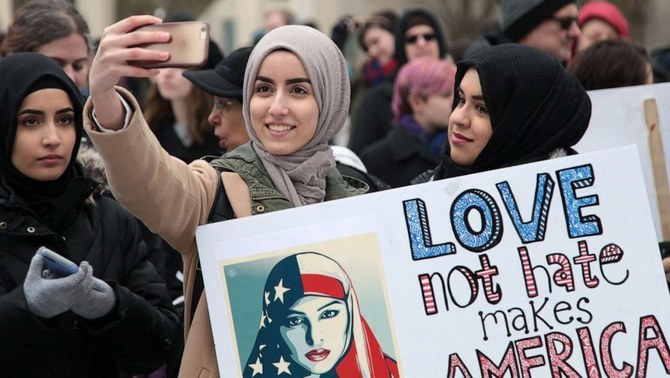Ray Hanania
The US Supreme Court last week voted to reject a congressional redistricting map in Alabama it said diluted the power of Black voters, affirming a fundamental principle on minority rights. The ruling could have a direct impact on a similar issue in neighboring Louisiana, where African Americans have charged that a proposed congressional remapping does not give them the political strength they merit according to the state’s demographics.
These cases offer just a taste of the many ongoing legal challenges that are asserting that, in many American states, powerful political groups have intentionally sought to weaken the political strength of minorities including Blacks, Hispanics and Asians.
Every 10 years, using Census statistics and demographic data, states and local governments redraw the districts in their areas, often with a focus on strengthening the ruling party’s chances of winning future elections — a process known as gerrymandering.
A major consideration when redistricting is the preservation or strengthening of concentrations of minority communities, ensuring that their voices are augmented by grouping them together, rather than dividing them. The data that drives this process comes in part from the US Census, in which most minority groups are identified and counted.
However, Arab Americans are not included in the Census or in the civil rights political power dynamic that drives the redistricting efforts every 10 years. Despite being a smaller minority group compared to Blacks and Hispanics, they are concentrated in large pockets in a handful of states.
So, the Arab American community’s demographics are, for example, significant in the 3rd Congressional District in Illinois, where more than 110,000 Arab American voters and their extended families live. This district has been held by Democrats since 1975 and is overwhelmingly Democratic. It was ranked by The New York Times as having the eighth-largest Arab American population of 50 American congressional districts and it reportedly has the highest concentration of Palestinian American voters.
But when redistricting the state following the 2020 Census, instead of expanding that base by drawing in Arabs and Palestinians who live in nearby districts, the Democrats decided to divide the 3rd Congressional District, spreading the Arab American and Palestinian populations across five of the newly drawn-up districts. Essentially, the Arab and Palestinian vote that was once considered strong has been diluted.
The 3rd District was apparently at the top of the Democratic Party’s target list to disembowel. The district was represented by Marie Newman, a Democratic progressive who not only challenged the party’s positions on healthcare and economic empowerment, but also became a strong voice for Arab and Palestinian rights.
Analysts have argued that the district was redrawn to strengthen the Hispanic vote in Illinois. In the 2022 Democratic primary election, Newman was pushed into a nearby western suburban district, the 6th District, and forced to run against a strong Democratic incumbent, Sean Casten. Newman lost. Instead of championing Arab rights, Casten has pandered to the community, doing little if anything to give it a voice in Washington. In the newly redrawn 3rd District, first-time Hispanic candidate Delia Ramirez was elected to Congress, giving Hispanics another voice.
While dividing the old 3rd District into five parts, Democrats also divided and weakened the voting power of the Blacks, Hispanics and women who live there. But the difference between Blacks, Hispanics and women and the Arab community is stark.
Dividing the 3rd District did little to undermine the voice and political power of African Americans, Hispanics or women, but it destroyed the potential for growth in the Arab American representation. In the current House of Representatives, there are 60 African Americans, 56 Hispanics or Latinos and a record 129 women. But there are only five Arab Americans, three of whom are part-Arab and only two whose ethnicity is fully Arab.
Although Newman is not Arab — in fact, her husband is Jewish — she was a champion of Arab and Palestinian rights, along with many other progressive issues that challenged the platform preferences of the Democratic Party. Dividing the 3rd District and forcing her to run against a longer-tenured Democrat like Casten ensured that Newman’s advocacy for Arab and Palestinian rights would end. This meant she would not be able to continue embarrassing the Illinois Democratic Party, which has, over the years, been anti-Arab. For example, Illinois was among the first of the 27 US states to adopt laws punishing citizens and companies that support a boycott of Israel’s government because of its breaches of human rights and its anti-Palestinian policies.
Casten’s new 6th District has a large Muslim population, but the majority of Muslims in America — nearly 28 percent — are non-Arab and are not considered a threat by pro-Israel activists or the Illinois Democrats who champion Israel’s advocacy.
Since losing her seat, Newman has gone on to serve as CEO of the Little City Foundation, which addresses the needs of children and adults with intellectual and developmental disabilities. Simply returning Newman to office is not enough. What needs to happen is for Arab Americans to set aside their internal political differences, come together and file a federal lawsuit to challenge the redistricting of Illinois on the basis that the new congressional map dilutes the voice of Arab Americans.
As last week’s Supreme Court verdict showed, this legal argument seems to work for every other ethnic group in America. So, why not Arabs too?







